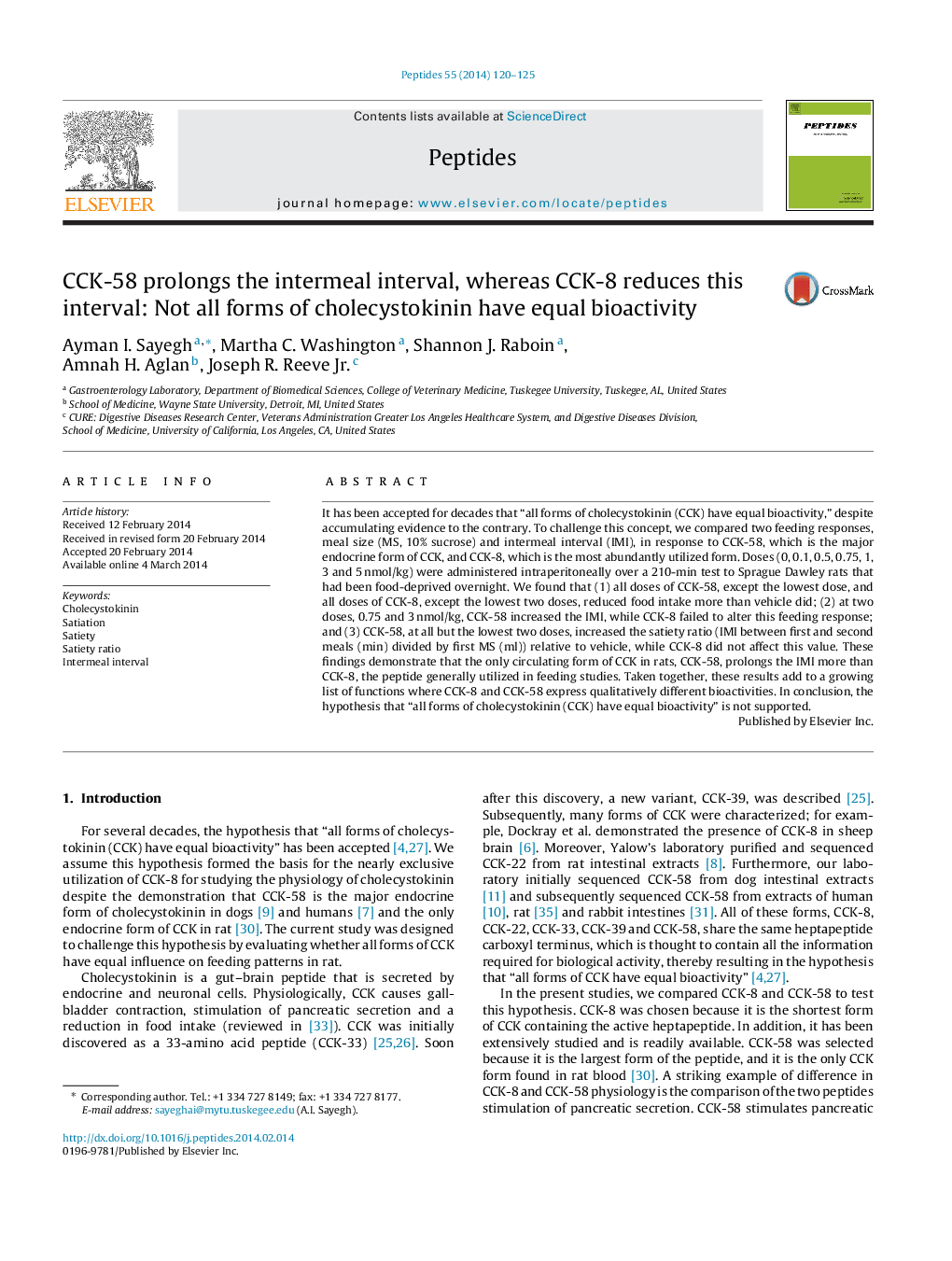| Article ID | Journal | Published Year | Pages | File Type |
|---|---|---|---|---|
| 8348358 | Peptides | 2014 | 6 Pages |
Abstract
It has been accepted for decades that “all forms of cholecystokinin (CCK) have equal bioactivity,” despite accumulating evidence to the contrary. To challenge this concept, we compared two feeding responses, meal size (MS, 10% sucrose) and intermeal interval (IMI), in response to CCK-58, which is the major endocrine form of CCK, and CCK-8, which is the most abundantly utilized form. Doses (0, 0.1, 0.5, 0.75, 1, 3 and 5Â nmol/kg) were administered intraperitoneally over a 210-min test to Sprague Dawley rats that had been food-deprived overnight. We found that (1) all doses of CCK-58, except the lowest dose, and all doses of CCK-8, except the lowest two doses, reduced food intake more than vehicle did; (2) at two doses, 0.75 and 3Â nmol/kg, CCK-58 increased the IMI, while CCK-8 failed to alter this feeding response; and (3) CCK-58, at all but the lowest two doses, increased the satiety ratio (IMI between first and second meals (min) divided by first MS (ml)) relative to vehicle, while CCK-8 did not affect this value. These findings demonstrate that the only circulating form of CCK in rats, CCK-58, prolongs the IMI more than CCK-8, the peptide generally utilized in feeding studies. Taken together, these results add to a growing list of functions where CCK-8 and CCK-58 express qualitatively different bioactivities. In conclusion, the hypothesis that “all forms of cholecystokinin (CCK) have equal bioactivity” is not supported.
Related Topics
Life Sciences
Biochemistry, Genetics and Molecular Biology
Biochemistry
Authors
Ayman I. Sayegh, Martha C. Washington, Shannon J. Raboin, Amnah H. Aglan, Joseph R. Jr.,
